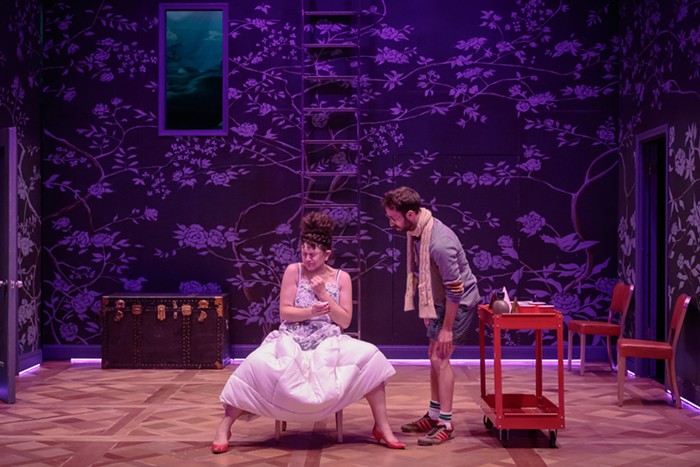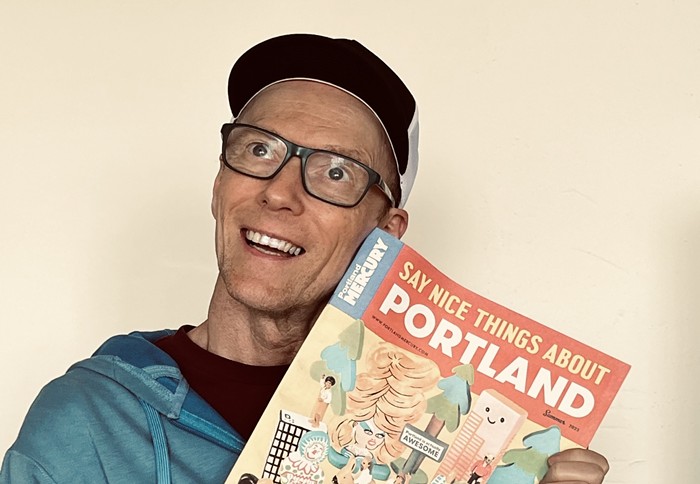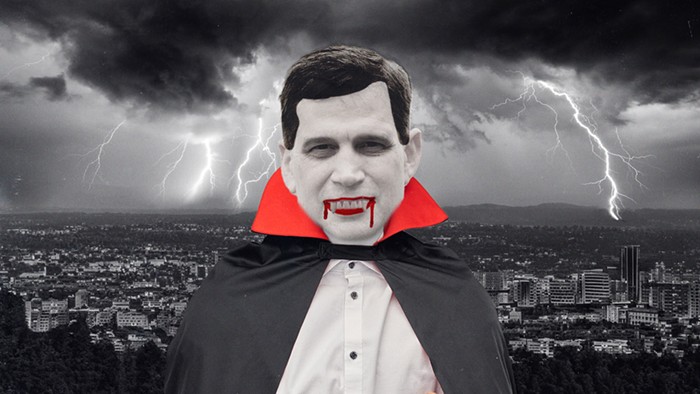Last July, TJ Norris curated grey|area at the Guestroom Gallery, resulting in one of 2006's best group shows. This month, Norris has curated a sequel of sorts with invisible.other at the New American Art Union. Again, the work is largely muted and understated, but, collectively, far more visually arresting than grey|area. That the work achieves both is particularly apt given that Norris explains, in his curatorial statement, the show investigates the idea of "the blank stare": a term that simultaneously signifies passive reception and direct confrontation.
As such, there are pieces that threaten to disappear into a kind of self-effacing absence. Abi Spring's painting, "Wet," is barely there, as soft fluorescent yellow rows of teeth-like patterns creep across a bright, white panel. Conversely, Daniel Barron's enormous, plexi-mounted photograph seethes with fiery reds and oranges that surround a milky white foreground. Although indiscernibly abstract, the image's forms possess an explosive, biomorphic quality that suggests the magnification of some microscopic drama.
Still, the exhibition's best work inhabits the sprawl between these two extremes. Most entrancing are Laura Vandenburgh's six restrained studies that resemble topographical maps. In the delicate "Coast (huftaroy + reksteren)," two amorphous forms appear like islands, but the meticulous linear markings that cover them suggest something like tiny hairs on a fur pelt.
Perhaps the most emblematic piece in invisible.other is Michael Paulus' sculpture "Tabernacle," which occupies an unassuming space in a far corner of the gallery. Fabricated with wood, brass, and glass, "Tabernacle" appears to be little more than a display cabinet, a piece of furniture swiped from someone's living room. But that sidesteps what Paulus is up to. With a frosted pane of glass and its door seductively ajar, the piece sends viewers mixed messages. If the glass reveals nothing, the open door invites closer scrutiny, but, peeking inside, there's nothing more to discover. In physical terms, it recreates—and undermines—the viewer's expectation that, in some capacity, an artist make his or her innermost thoughts readily available. But opening the door of Paulus' sculpture insists on an ultimate disconnection between the viewer and, per Norris' title, the unseen interior of the artist.












